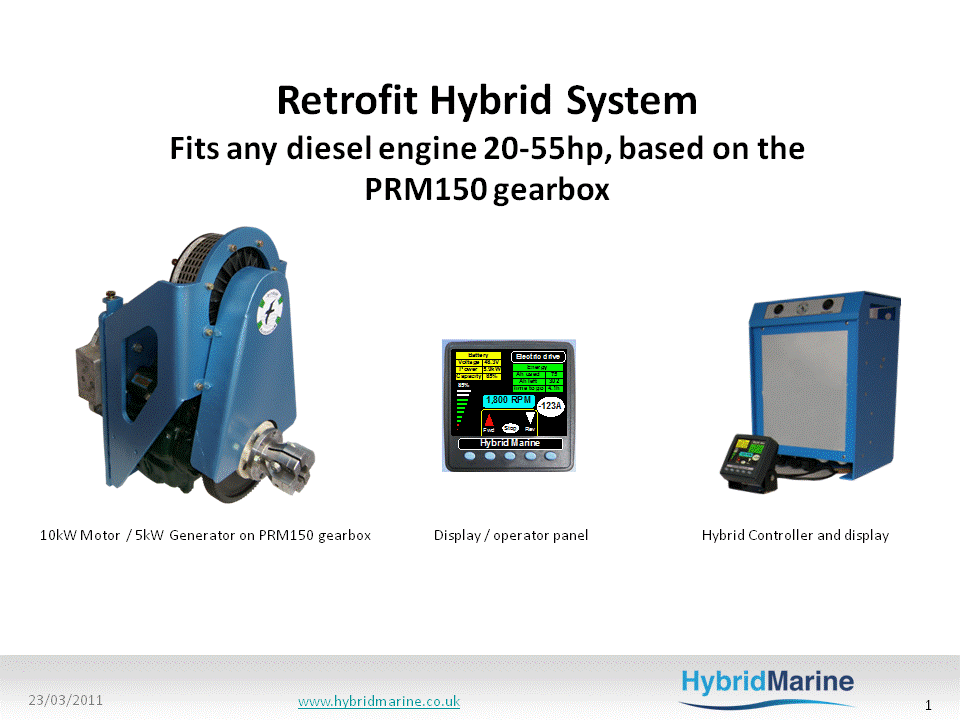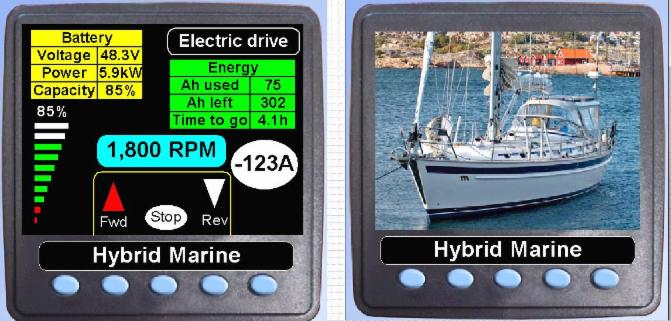Seagoing Hybrids
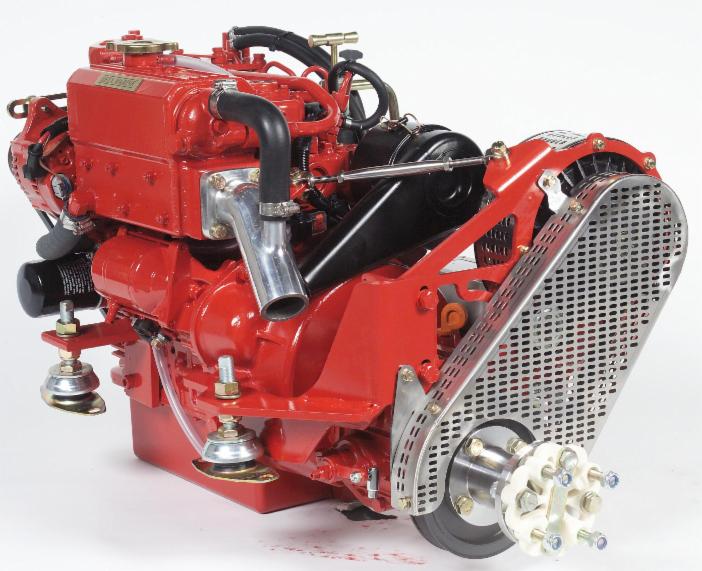 Hybrid system based on the Beta Marine range of engines from 10hp to 90hp
Hybrid system based on the Beta Marine range of engines from 10hp to 90hp

this can be installed on ANY marine engine 60hp and below

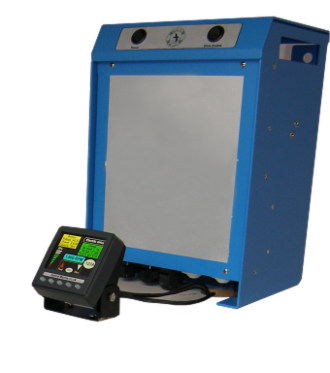
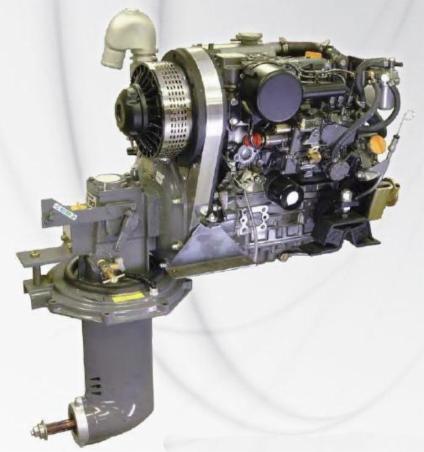
Saildrive hybrid based on a Yanmar 30hp engine (still in development)
Sea going Hybrid systems
After 8 years of research and development we have selected a parallel hybrid configuration for our sea going systems. Using our established control technology this system provides the best feature/cost performance of all the competing hybrid configurations (see discussion What is a Hybrid? ). An integrated Hybrid system has been developed to provide a complete power and propulsion solution for small craft.
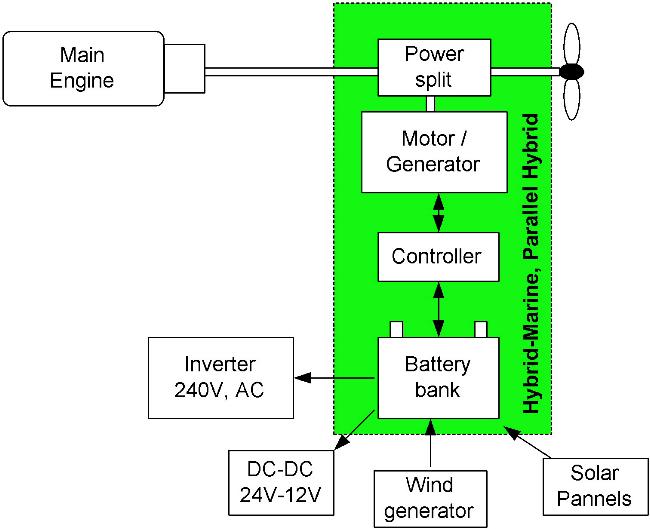
This parallel hybrid system can be fitted to a vessel during its initial construction or retrofitted to an existing diesel installation. The hybrid system does not disturb the normal shaft / propeller connection to the diesel, instead as the name implies it connects to the shaft in parallel with the standard diesel engine. Hybrid systems have the most to offer in efficiency improvements during low to mid power cruising and our system makes best use of this basic principle. The standard diesel engine is sized to provide the maximum power requirement for the vessel, while the electric drive is designed to match the boats mid range power needs. This allows the electric drive components to be smaller and provides a very cost effective hybrid solution.
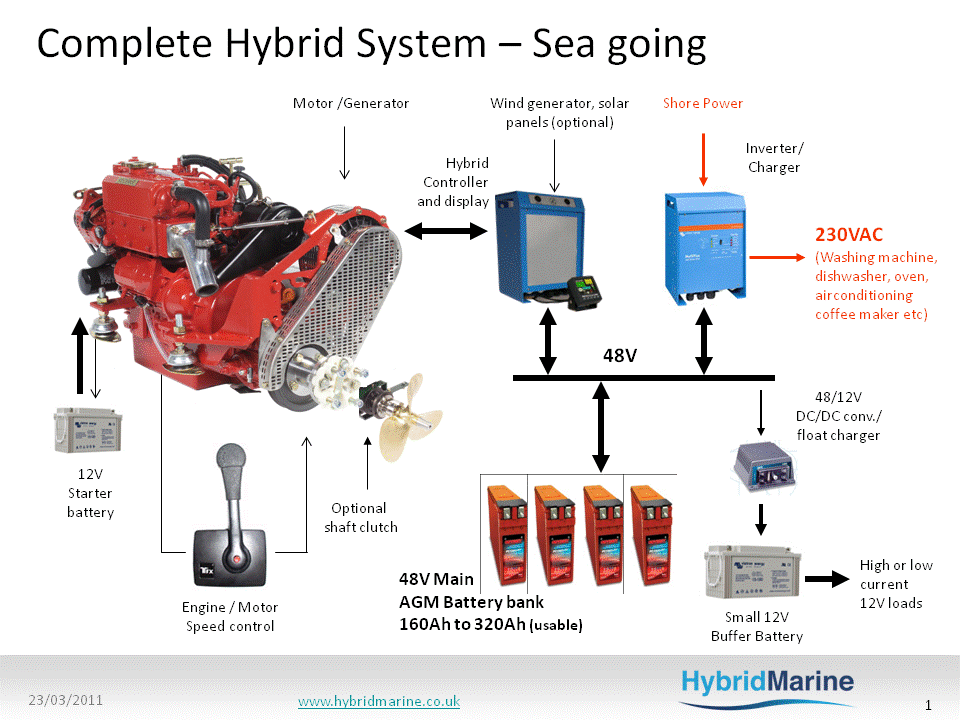
- Whisper quiet electric operation yet the vessels standard diesel engine remains available to meet high end power requirements.
- Whilst sailing the system regenerates a significant and useful amount of electricity from the rotating propeller.
- System can be operated as a standalone 5kW diesel generator when at anchor or if shore power is unavailable – this can support air conditioning.
System Features
- Highly efficient system with much improved fuel consumption figures. Extended cruising range on limited fuel resources.
- Built in redundancy, if the diesel engine fails then you can use the electric drive and visa versa.
- Off the shelf system suited to both new build and retrofit applications.
- Simple user friendly controls.
- Acts as an intelligent power management system, can be combined with other renewable energy sources.
- A cost effective solution that can be customised around your vessel's power requirements.
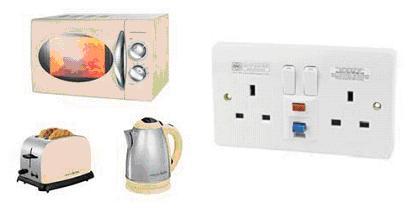
Over recent years there has been a great deal of interest in Hybrids. This technology can offer reductions in fuel consumption and the electric drive enables quiet, green boating. Our integrated hybrid system has been designed from the ground up to provide an off the shelf solution.
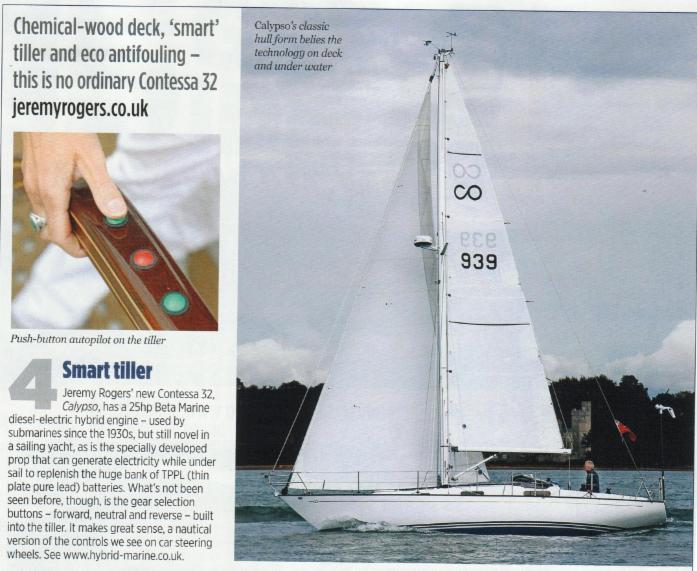
We have a 25hp hybrid system fitted to the iconic Contessa 32. Three buttons on the tiller provide a continualy variable speed control in forward and reverse, this was dubbed the "Smart tiller" by Yachting Monthly.
The system is controlled by innovative electronic technology that is designed to serve you rather than baffle. The complexity is hidden away and a user-friendly control panel provides simple system operation. The system can be installed from new or retrofitted to an existing vessel. Since no plumbing or external cooling system is required then fitting the system is much simpler than installing a diesel generator. Purchase, installation and servicing costs are lower than those of a standalone diesel generator plus in addition you get all the extra hybrid features listed above. Ultimately this makes ours a very cost effective system and a real “value” purchase.
Retrofit hybrid system, download as a PDF
How does the system work ?
During low to mid power cruising (around 2/3 of maximum hull speed) the electric motor can drive the vessel using the energy stored in the battery bank. When the batteries are depleted then the main engine is started to drive the vessel. At this time the electric motor automatically becomes a generator and recharges the batteries. The extra shaft load seen by the engine during this combined propulsion and charging period causes the engine to operate with higher efficiency. Once the batteries are recharged you can then switch back to electric drive. Alternatively you can keep the energy in your batteries to silently drive high power appliances when anchored at the end of the day.
When sailing the propeller can be locked or allowed to freewheel. The motor/generator can then be allowed to rotate and regenerate electricity to charge your batteries. This charging process does add some drag to the vessel and so in light airs regeneration can be reduced or disabled via the control panel.
If you need to punch into heavy seas or motor against the tide then the full power of the diesel engine can be used to drive the vessel. Equally in calmer conditions you can slip your lines and motor in complete silence under electric drive. Later in the day, perhaps after some regenerative sailing, you can return in the same way. In the evening you can use power stored in the battery bank to silently run standard domestic appliances.
Example display images, Download as a PDF
How fast can I go using the electric motor ?
The standard system uses a 10kW motor (13hp). A Malo 46' yacht has a hull speed of approximately 9kts and requires 100hp to achieve this. However at 6kts it only needs 8kW so for this vessel the electric drive can achieve just over 2/3 of hull speed in calm conditions.
How far can I go on my batteries?
This depends on the size of your boat, the size of your battery bank and how fast you want to go. One example would be to take a 40' auxiliary vessel that requires around 4kW to achieve 5-6 kts. With four 200Ah batteries we would have around 7.7kWh of usable energy storage. We could thus travel for around 2 hours at 5-6 kts. Increase the size of the battery bank and you can go faster or further.
Download Brochure for production systems (PDF, 600kB)
